




Lateral Faces Explained: Shapes, Properties & Everyday Uses
What are the Lateral Faces of a 3-D Figure?
The word "lateral" literally means the side of an object. So, you must be wondering what are lateral faces in Maths? Well, the lateral surface or face of a three-dimensional figure refers to all the sides of the solid figure, except its base and top.
Examples
Here are some 3-D geometric figures to help you understand the concept of lateral faces better.
Pentagonal Prism: In this solid shape, there are 2 regular pentagons that form the bases (as shown in the figure) and 5 sides. These five sides are all rectangular in shape and are known as the lateral faces of the figure. Also, all the rectangular lateral sides of this prism are congruent.
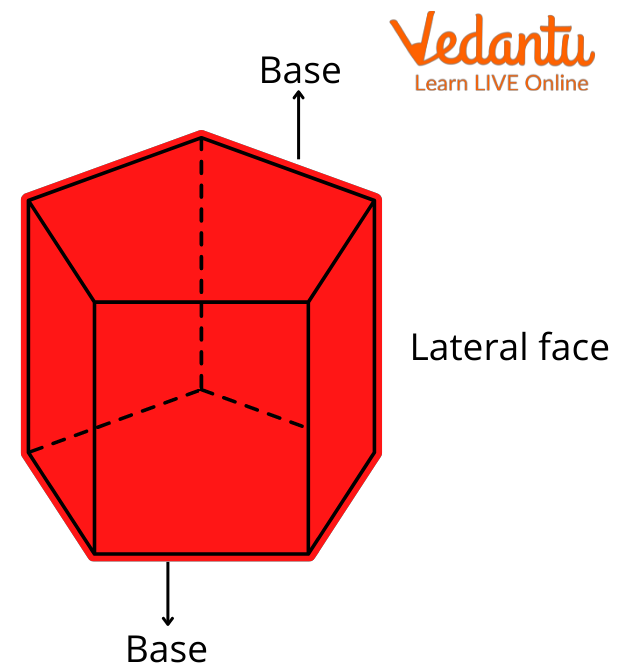
Rectangular Prism: In this type of prism, if we consider the two square-shaped sides as its base, then the figure has 4 lateral faces. Each of its lateral faces is rectangular and congruent.
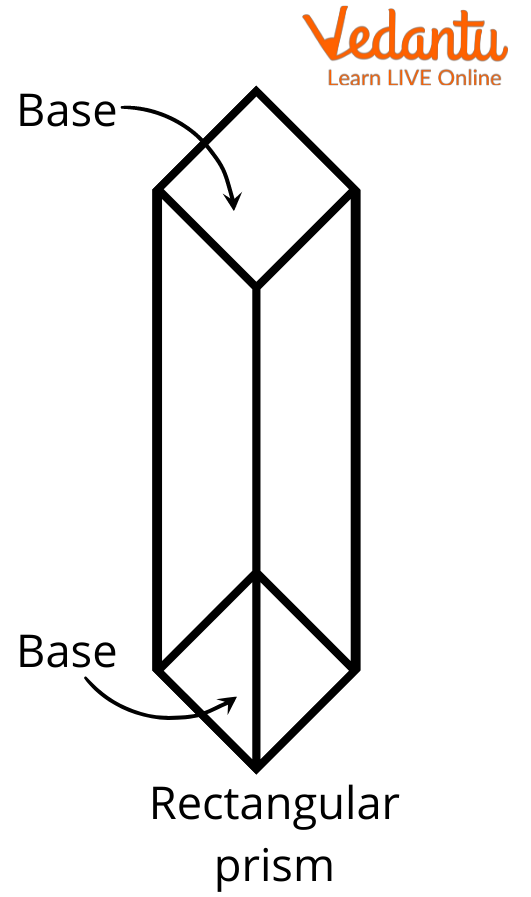
Square Pyramid: In this pyramid, there is one flat square base at the bottom, and all the other faces apart from the base are its lateral faces. Therefore, it has 4 lateral faces.
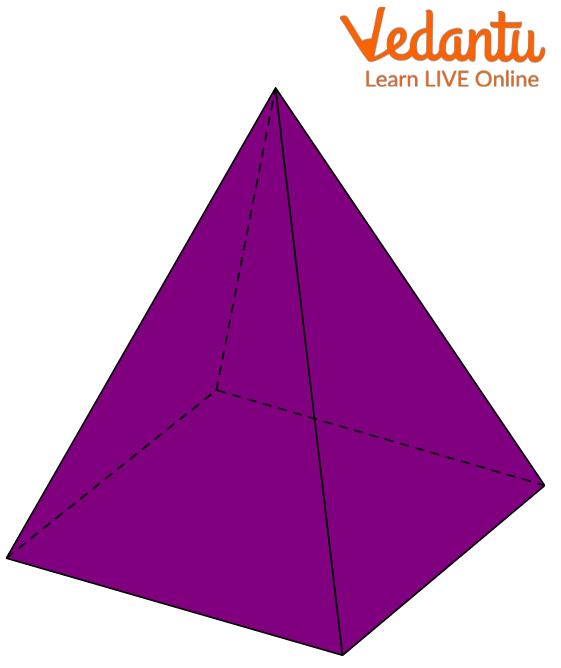
Cylinder: It is a unique shape with two circles as its bases — at the top and bottom. Unlike other shapes, it has a cylindrical lateral face also called its curved surface. When cut and flattened, the lateral face forms a square.
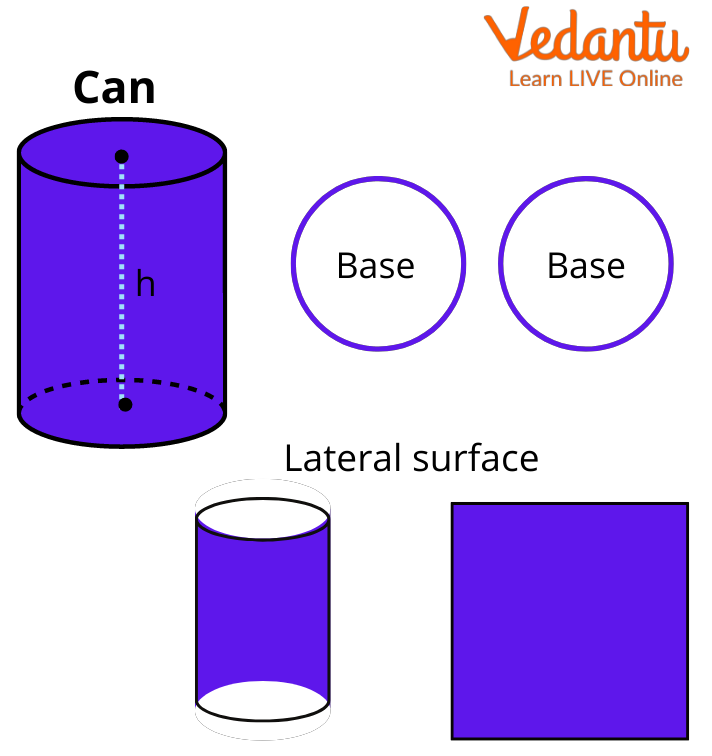
Lateral Surface Area
Now that you have learnt what are lateral faces, you should also know a bit about how to find the areas of these faces specifically.
The lateral surface area of a solid geometric figure is defined as the total area covered by only the lateral surfaces of the figure. This area should not be confused with the total surface area. The total surface area of a 3-d shape is the sum of the lateral surface area and the areas of its base and top.
Thus, total surface area = lateral surface area + area of bases
Here are the lateral surface areas of some common 3-D shapes.
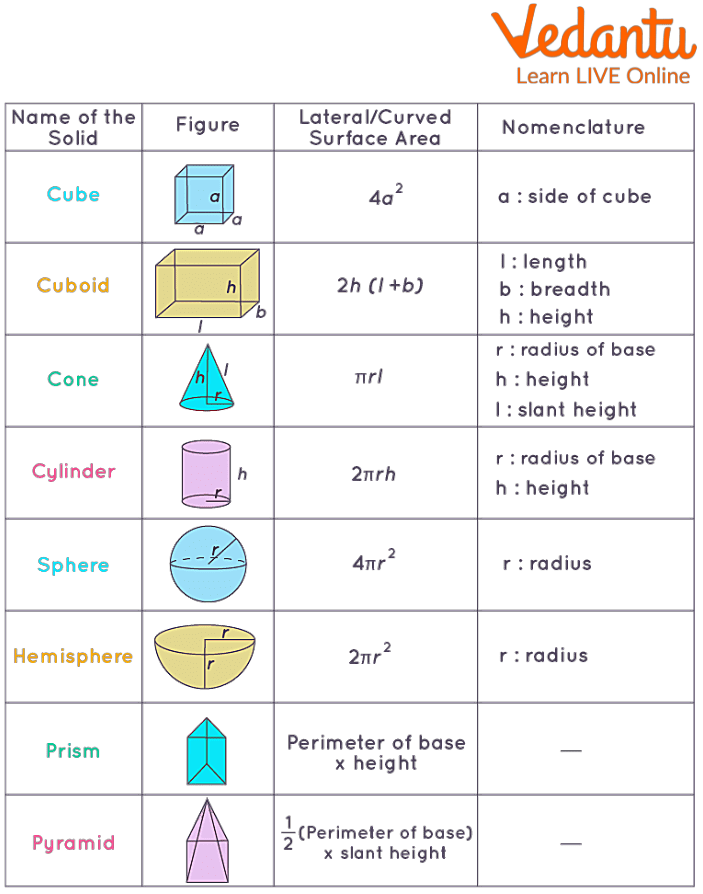
Conclusion
We can conclude that the lateral faces are present only in 3-D figures and not in 2-D shapes. Also, different figures have different numbers and shapes of lateral faces. It is also important to remember the difference between the lateral surface area and the total surface area of an object.
If you are looking for more such informational Maths topics, head to our website and explore through a huge collection of well-researched articles.
FAQs on What Are Lateral Faces in Geometry?
1. What are lateral faces in geometry?
In geometry, a lateral face is any flat surface (face) of a three-dimensional solid that is not a base. These are typically the 'side' faces that connect the bases of the solid. For example, in a rectangular prism (like a shoebox), the four faces that are not the top or bottom are the lateral faces.
2. What is a real-world example of lateral faces?
A common real-world example of lateral faces can be seen on a can of soup. The bases are the circular top and bottom lids. The curved label that wraps around the can represents the lateral surface. In a shape with flat sides, like a standard cardboard box, the four vertical sides you would tape up are its lateral faces.
3. How many lateral faces does a cube have?
A cube has four lateral faces. A cube has a total of six identical square faces. By convention, we consider the top and bottom faces as the bases, which leaves the remaining four faces on the sides as the lateral faces.
4. What shape are the lateral faces of a triangular prism?
The lateral faces of a triangular prism are always rectangles. A triangular prism is defined by its two triangular bases. There are three rectangular faces that connect the corresponding sides of these two triangular bases, forming the 'walls' of the prism.
5. What is the main difference between a lateral face and a base in a 3D shape?
The primary difference between a lateral face and a base lies in their function and orientation:
- A base is one of the two parallel, congruent faces that define the primary shape of a prism, or the single face upon which a pyramid stands. It is often considered the 'top' or 'bottom'.
- A lateral face is any face that connects the bases. They are the 'side' faces and are not considered the top or bottom.
6. How are lateral faces related to the concept of Lateral Surface Area (LSA)?
Lateral faces are directly used to calculate the Lateral Surface Area (LSA) of a solid. LSA is the sum of the areas of all the lateral faces only; it specifically excludes the area of the bases. For example, to find the area of the walls of a room that need to be painted, you would calculate the LSA, as you are not painting the floor or the ceiling (the bases).
7. Do shapes with curved surfaces, like cylinders and cones, have lateral faces?
Technically, shapes like cylinders and cones do not have lateral 'faces' because the term 'face' in geometry refers to a flat, polygonal surface. Instead, these shapes have a curved lateral surface. So, while a cube has four lateral faces, a cylinder has one continuous lateral surface that connects its two circular bases.
8. Why are the lateral faces of a pyramid always triangles?
The lateral faces of a pyramid are always triangles because of its fundamental structure. A pyramid is constructed by connecting every vertex of a single polygonal base to a single point above it, called the apex. Each side of the base polygon, when connected to the apex, forms a triangular plane. Therefore, no matter if the base is a square, a triangle, or a pentagon, the side faces that rise to meet at the apex will always be triangles.























